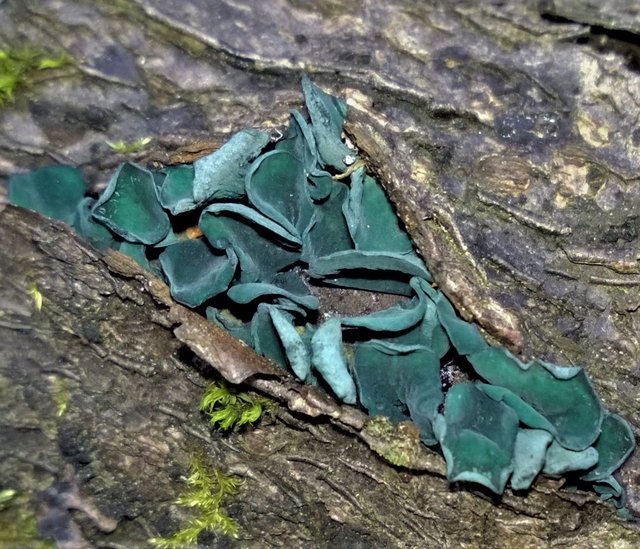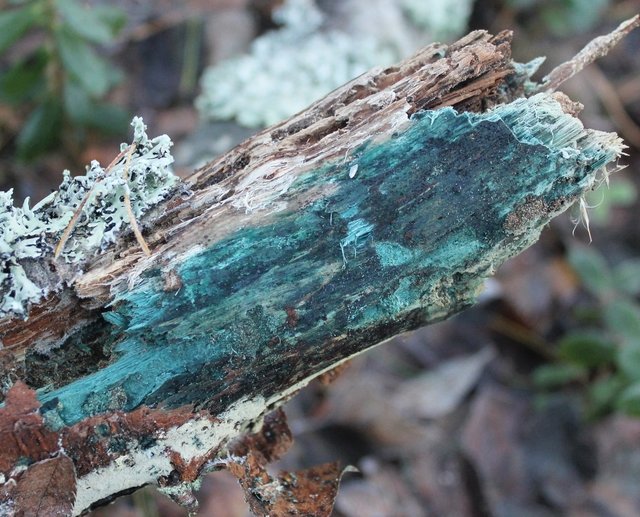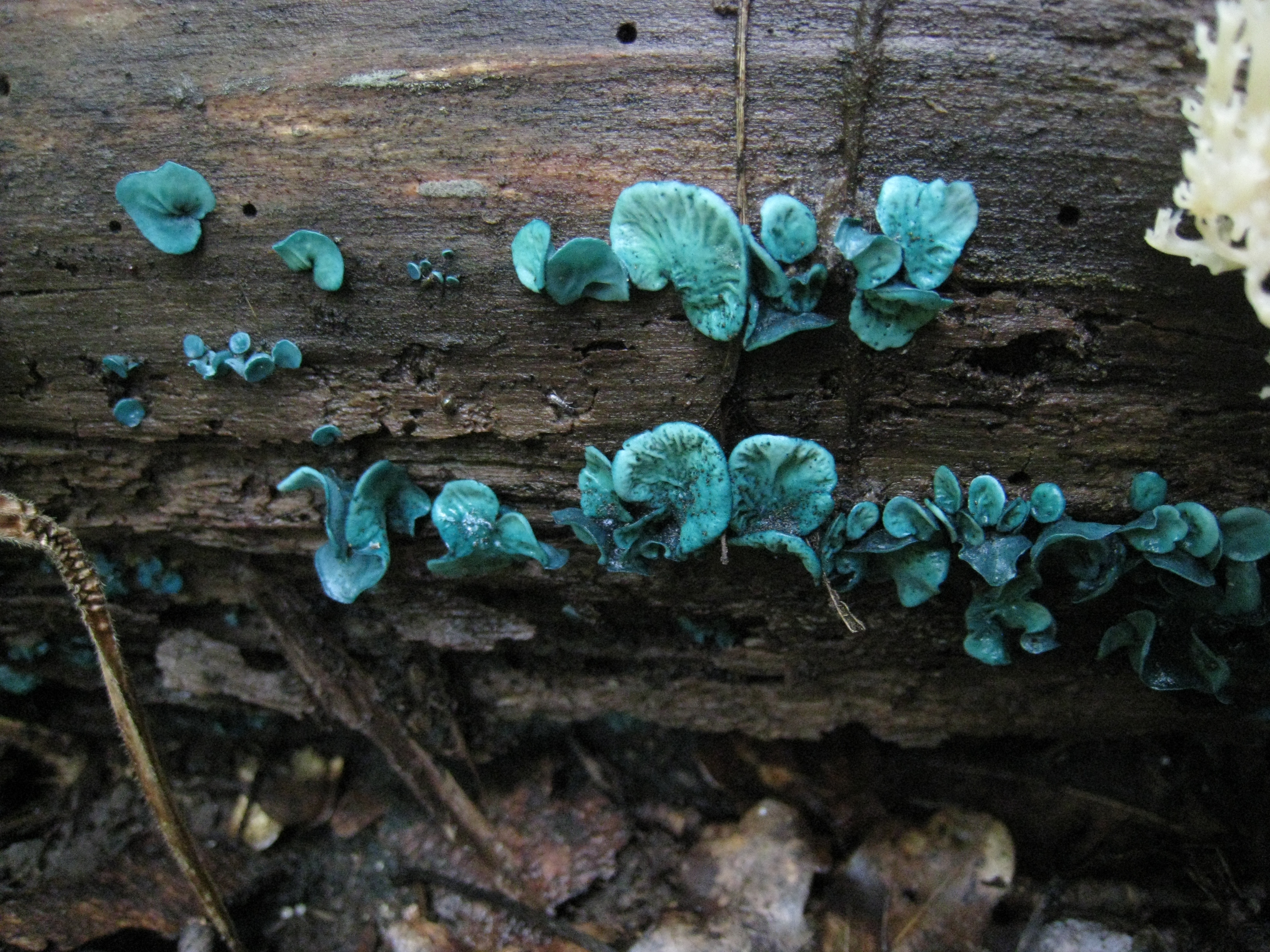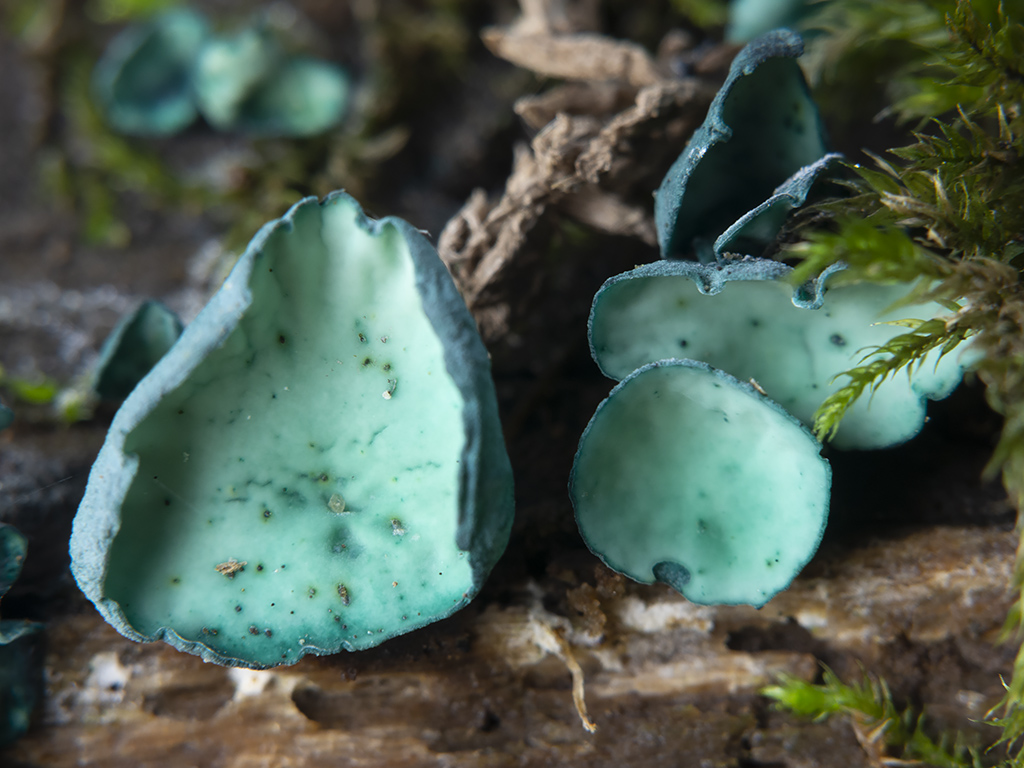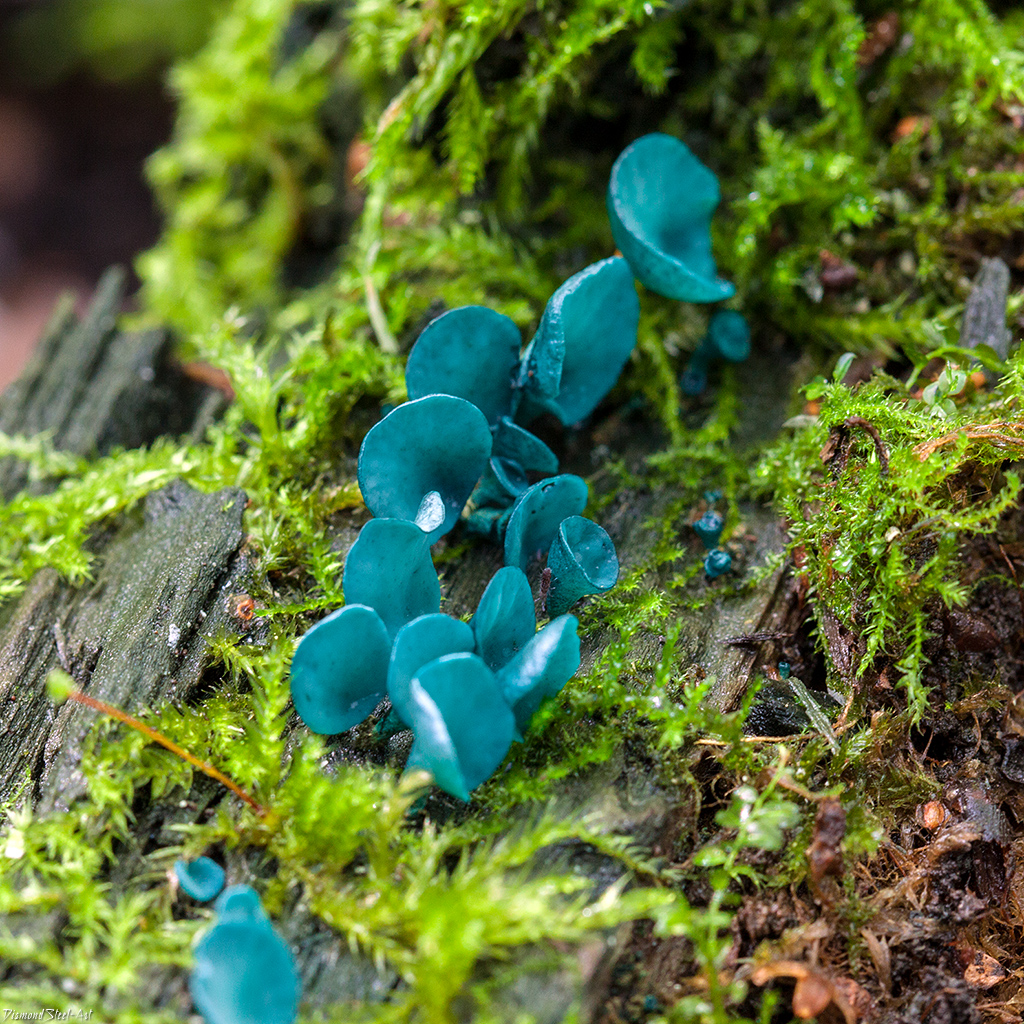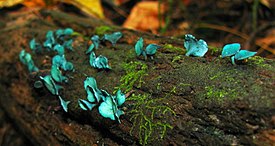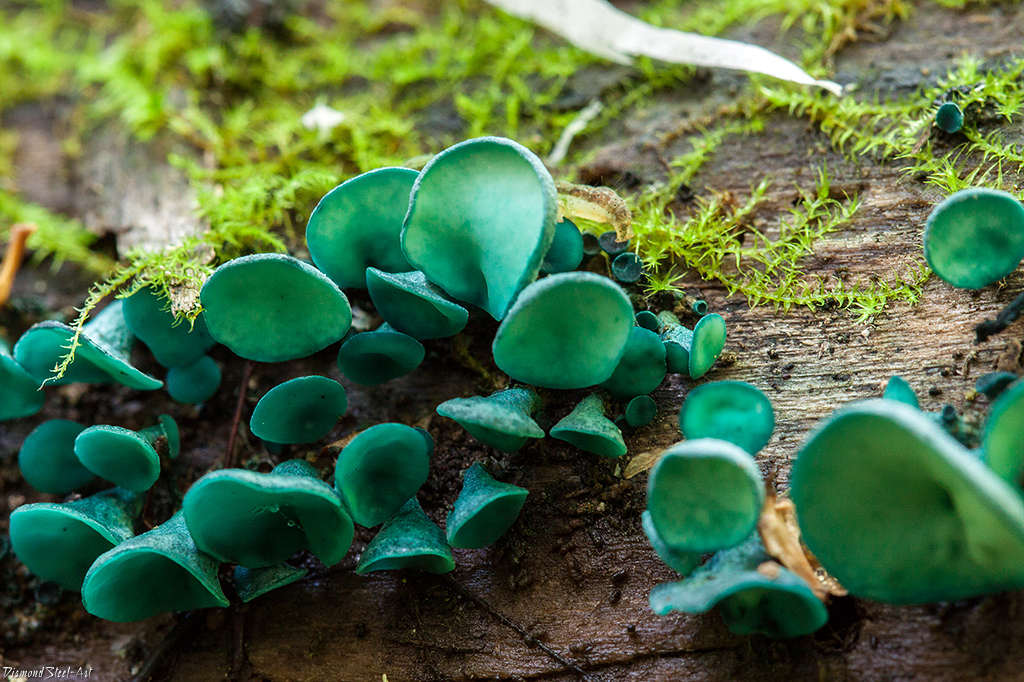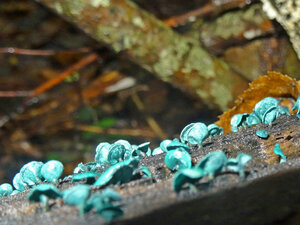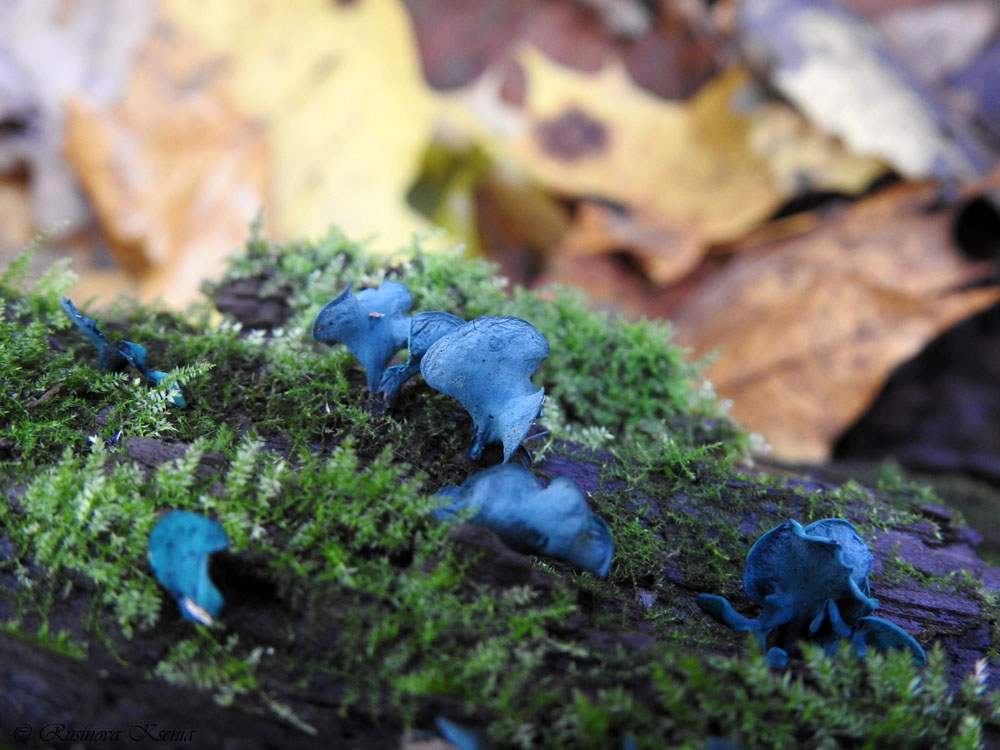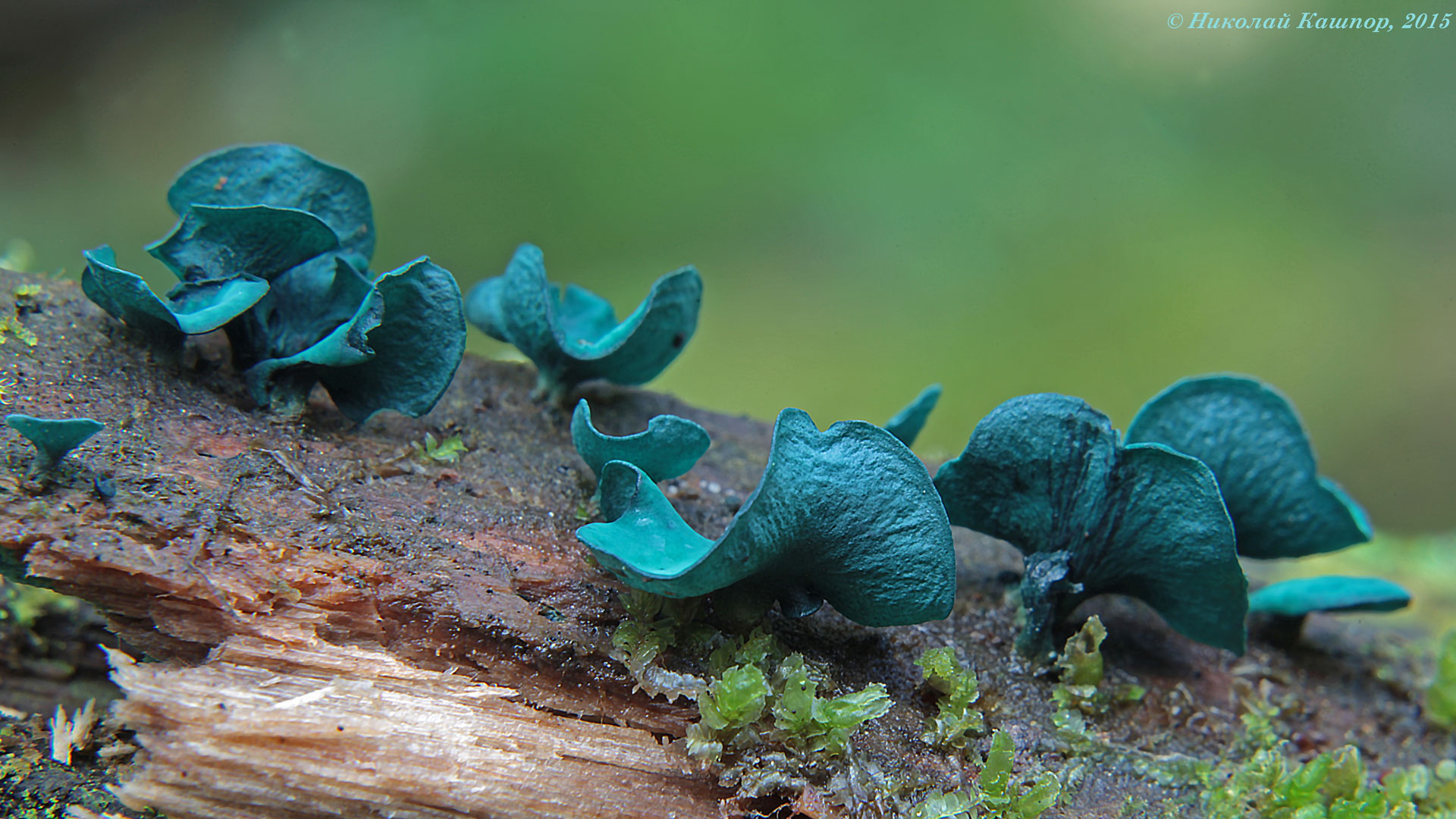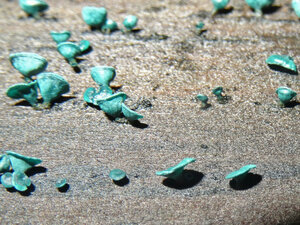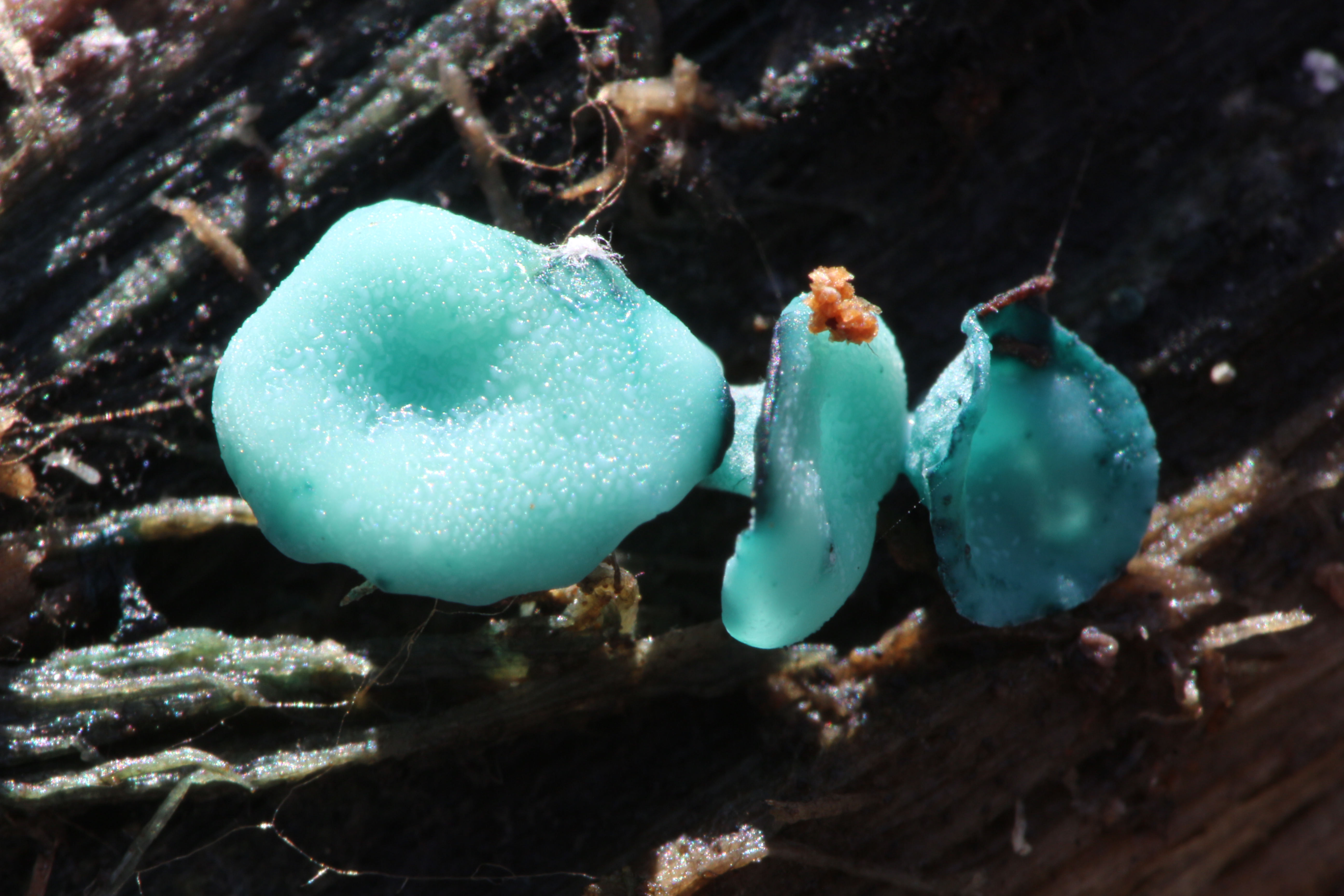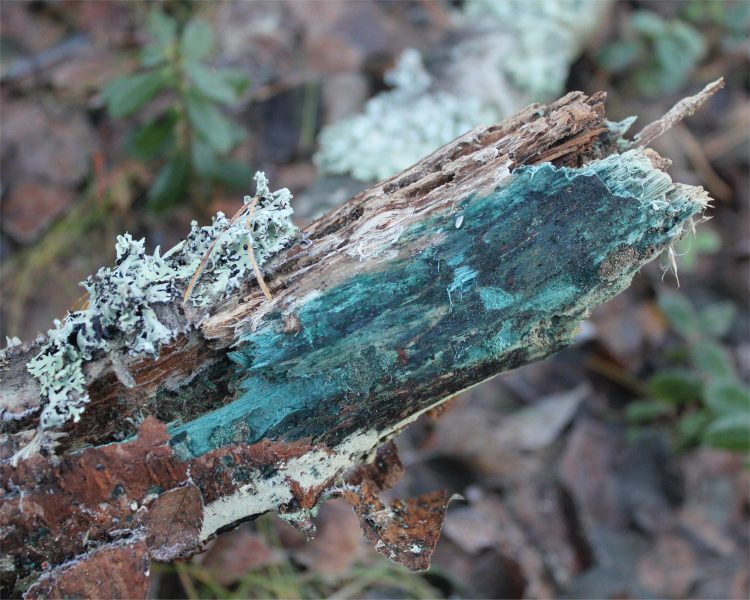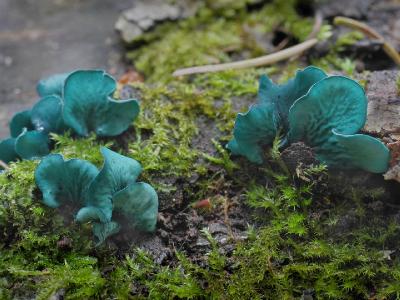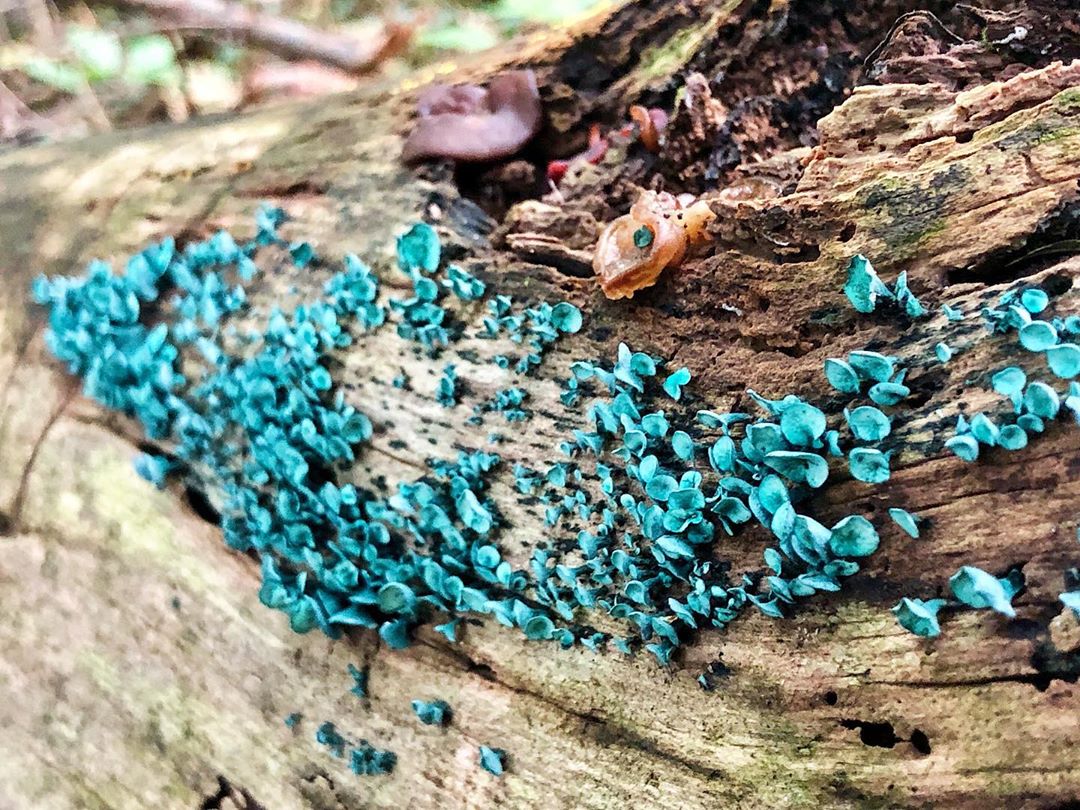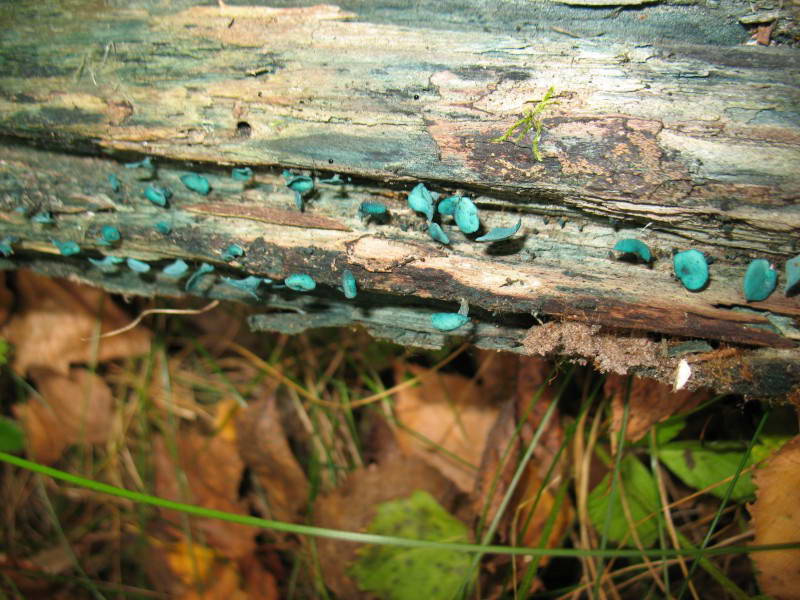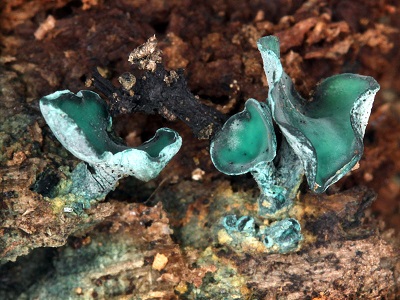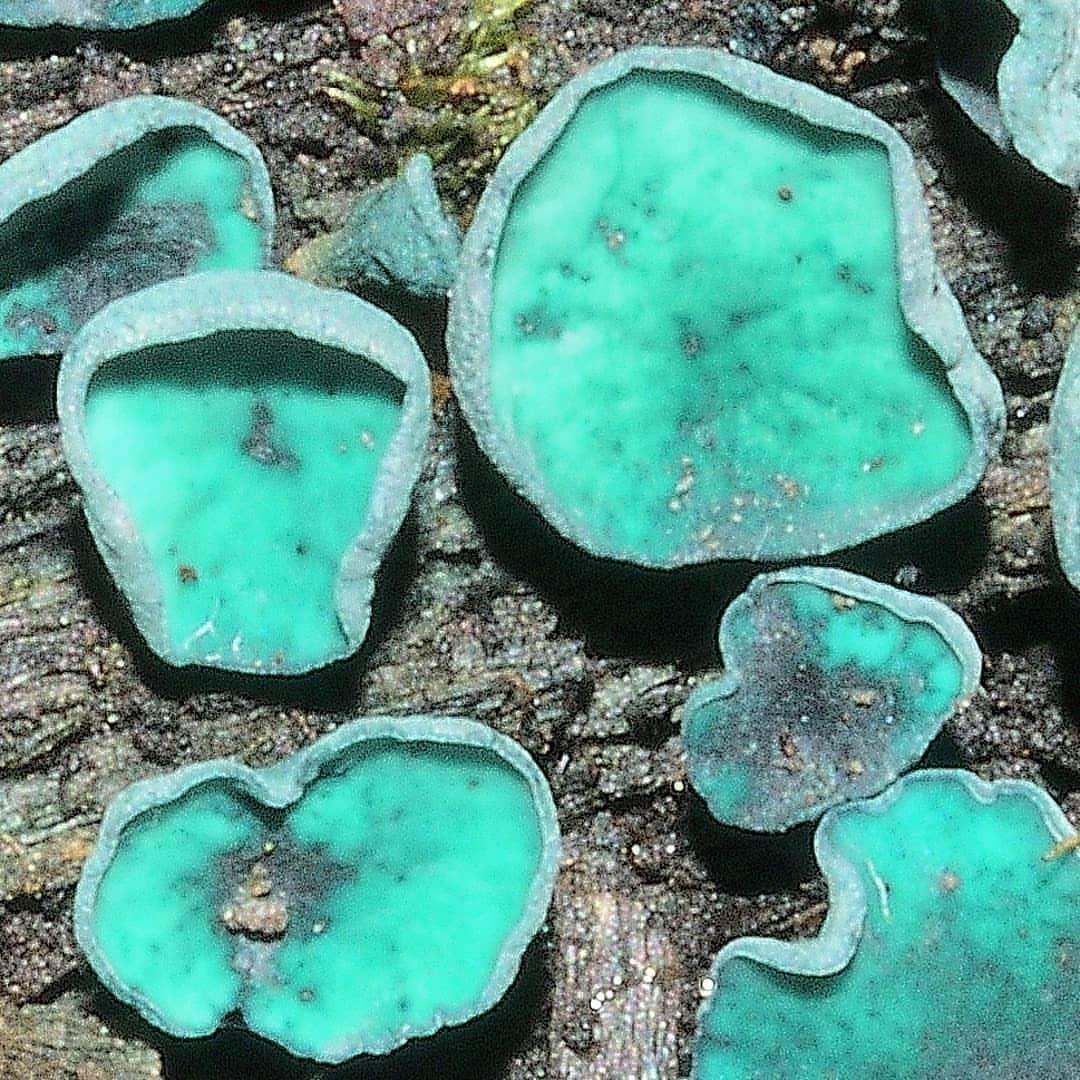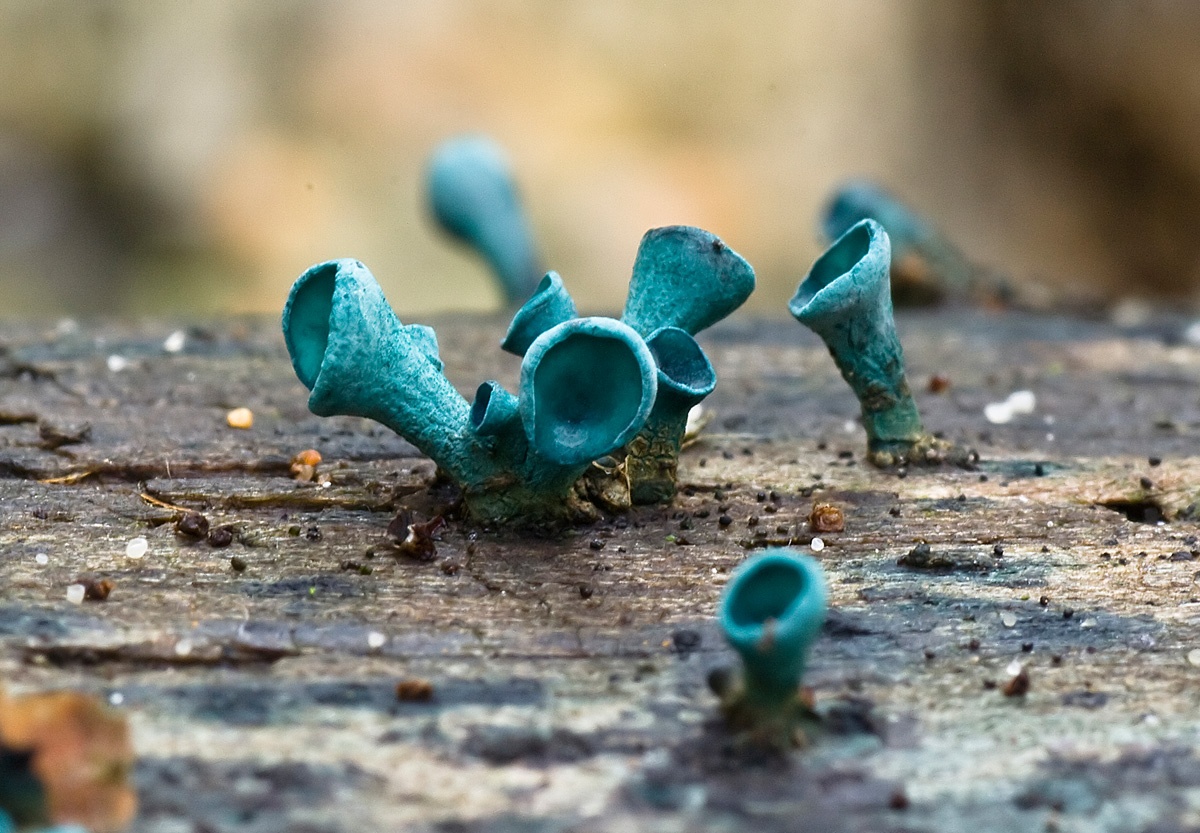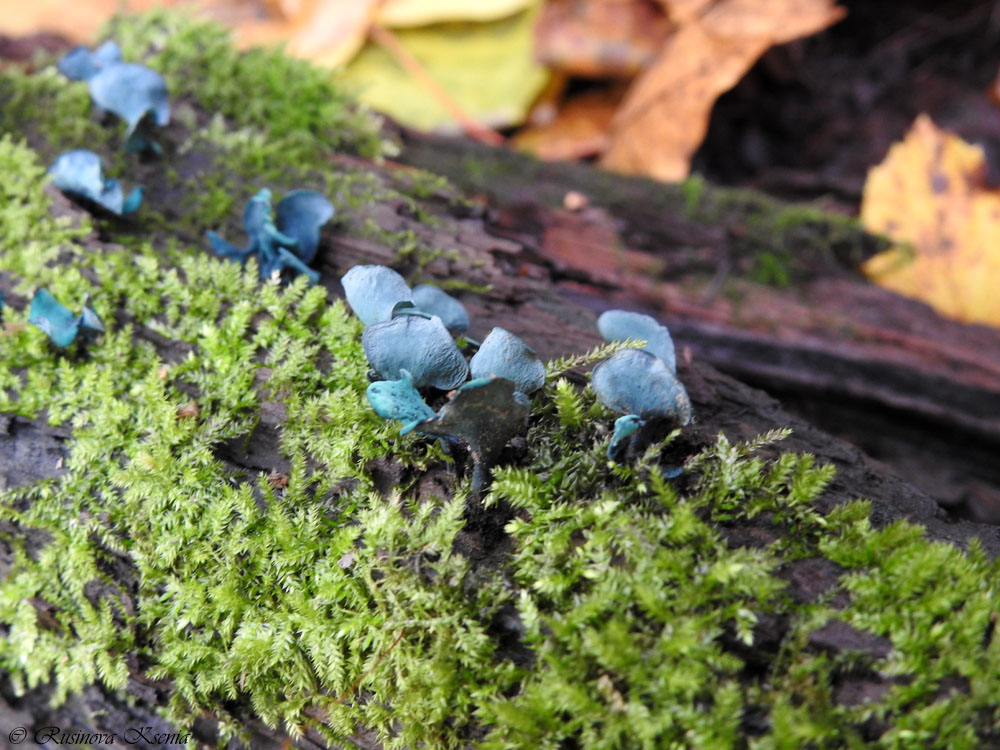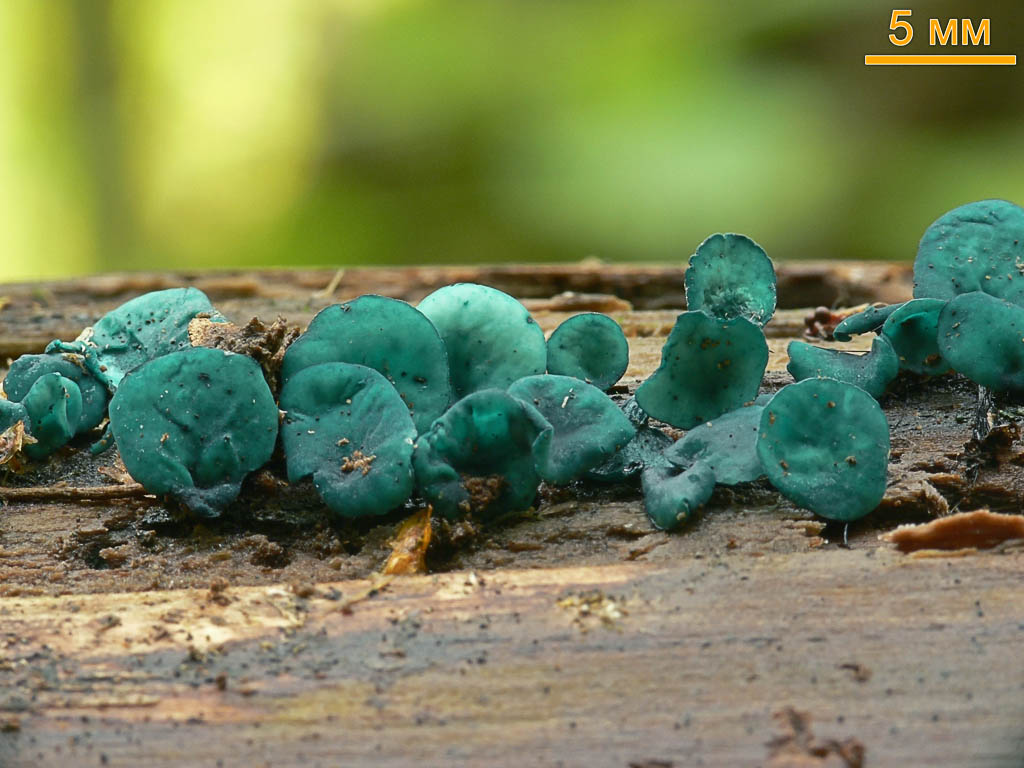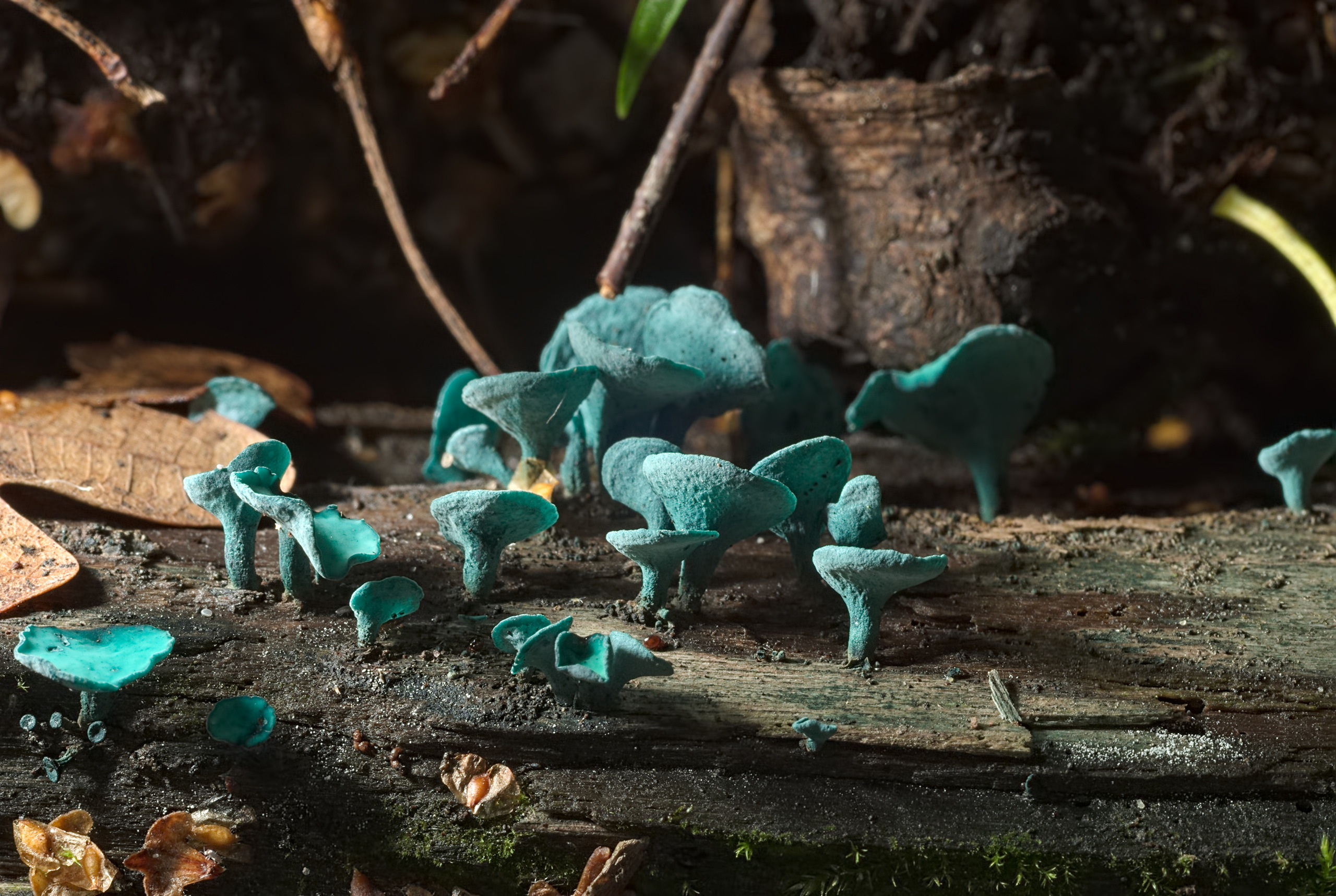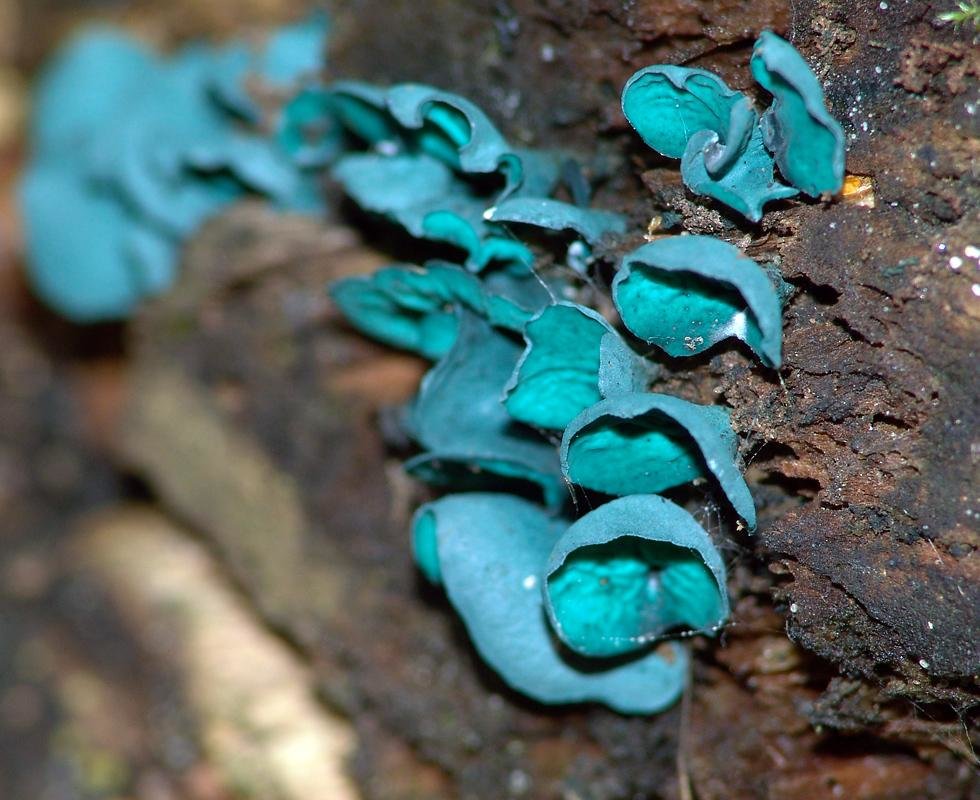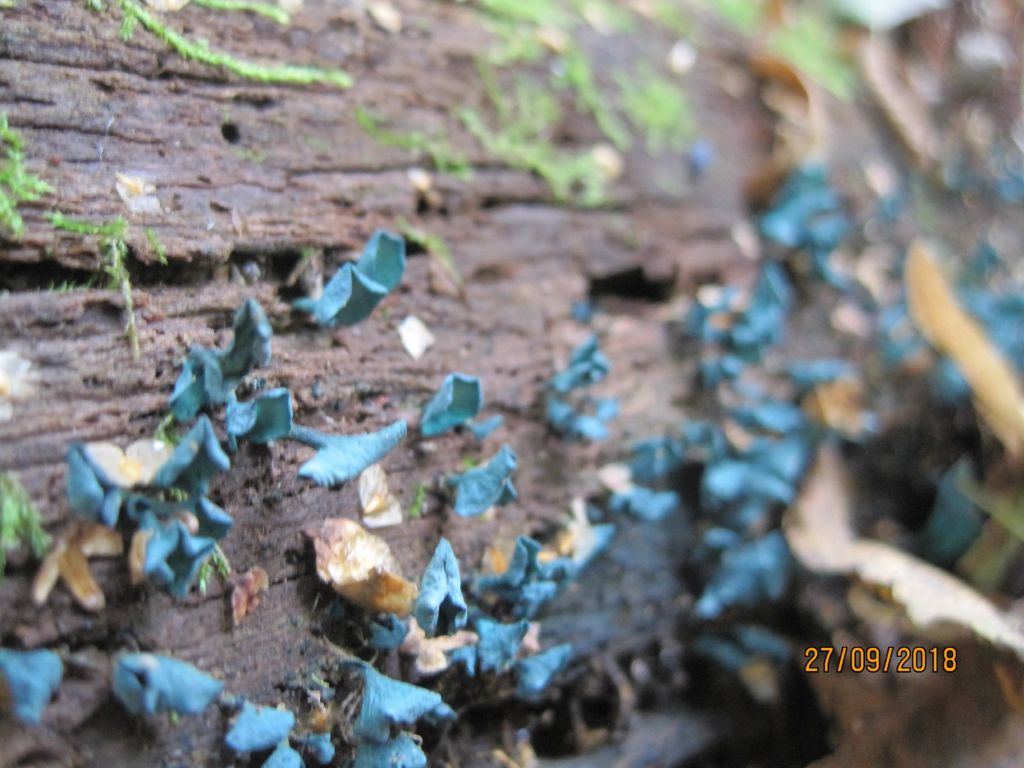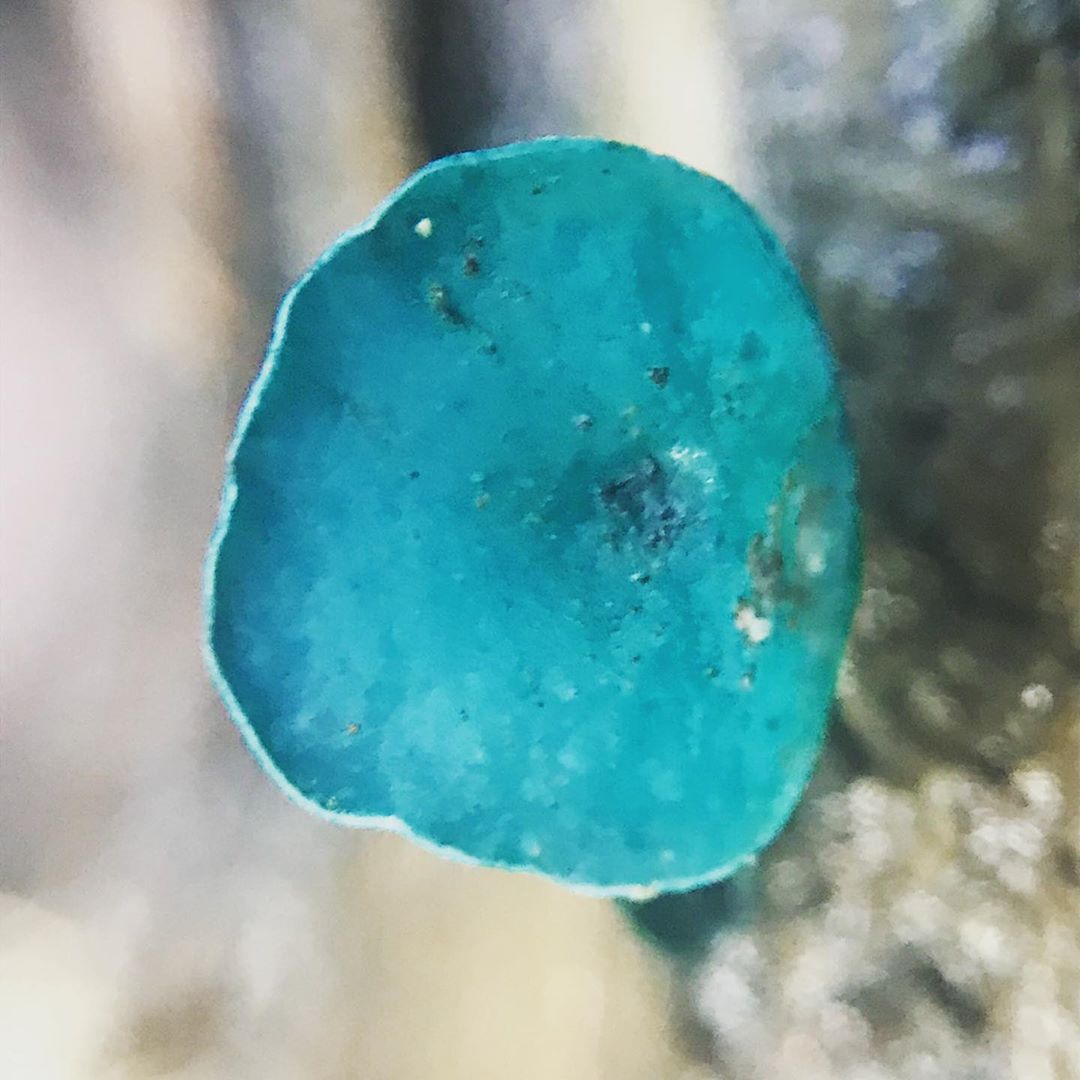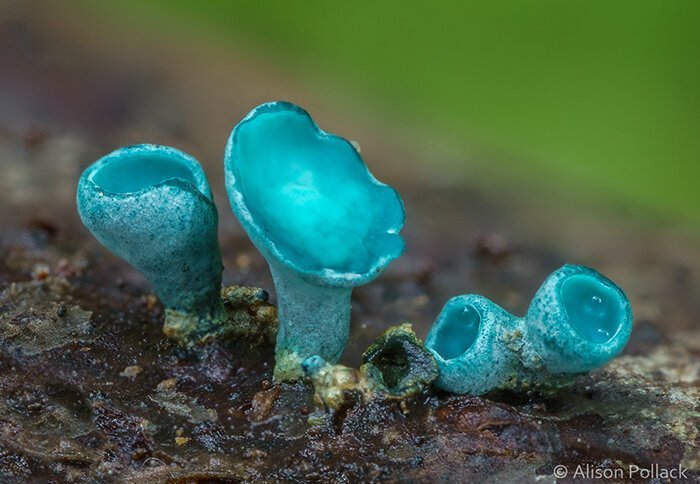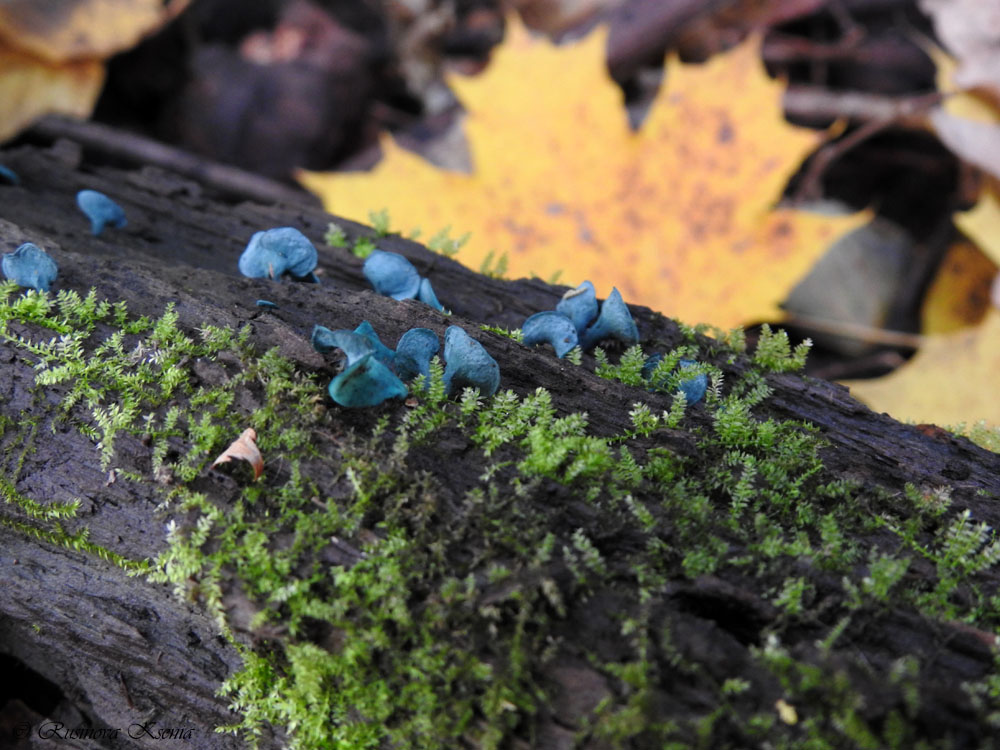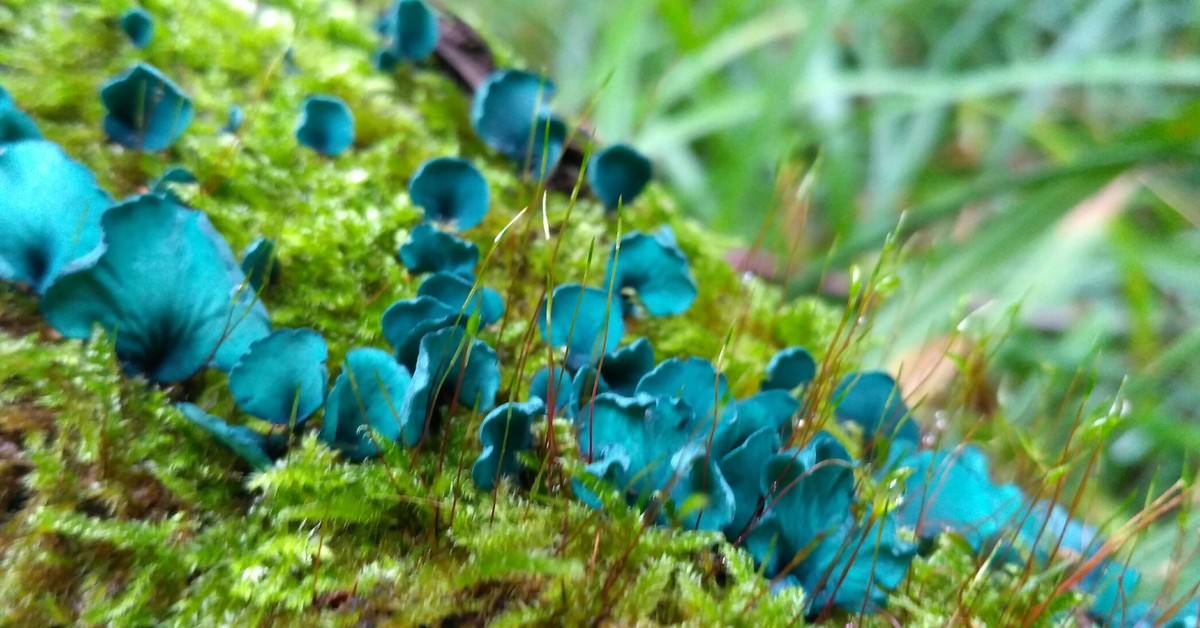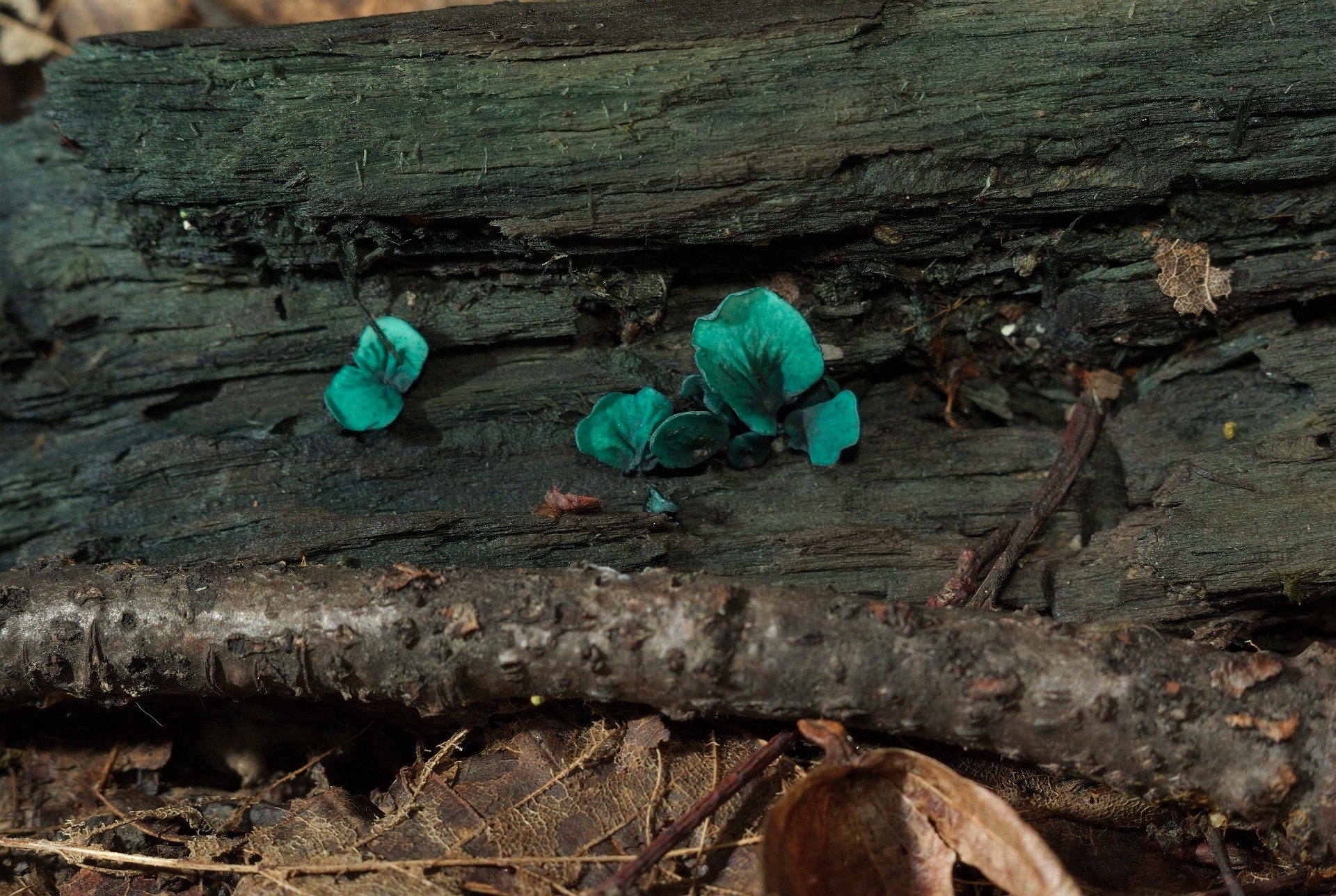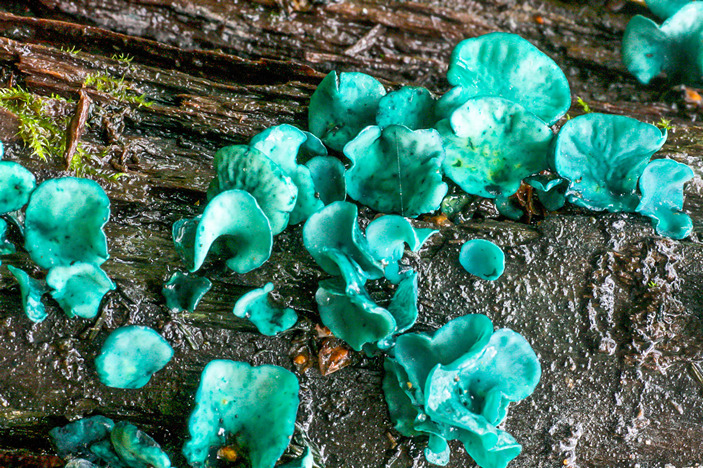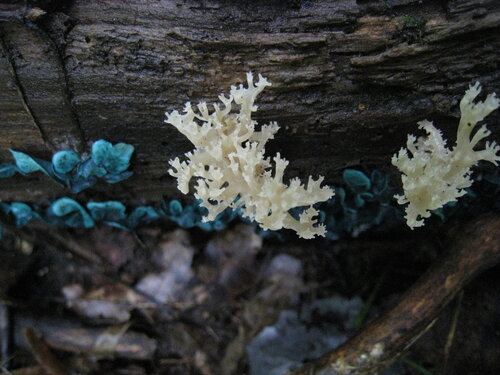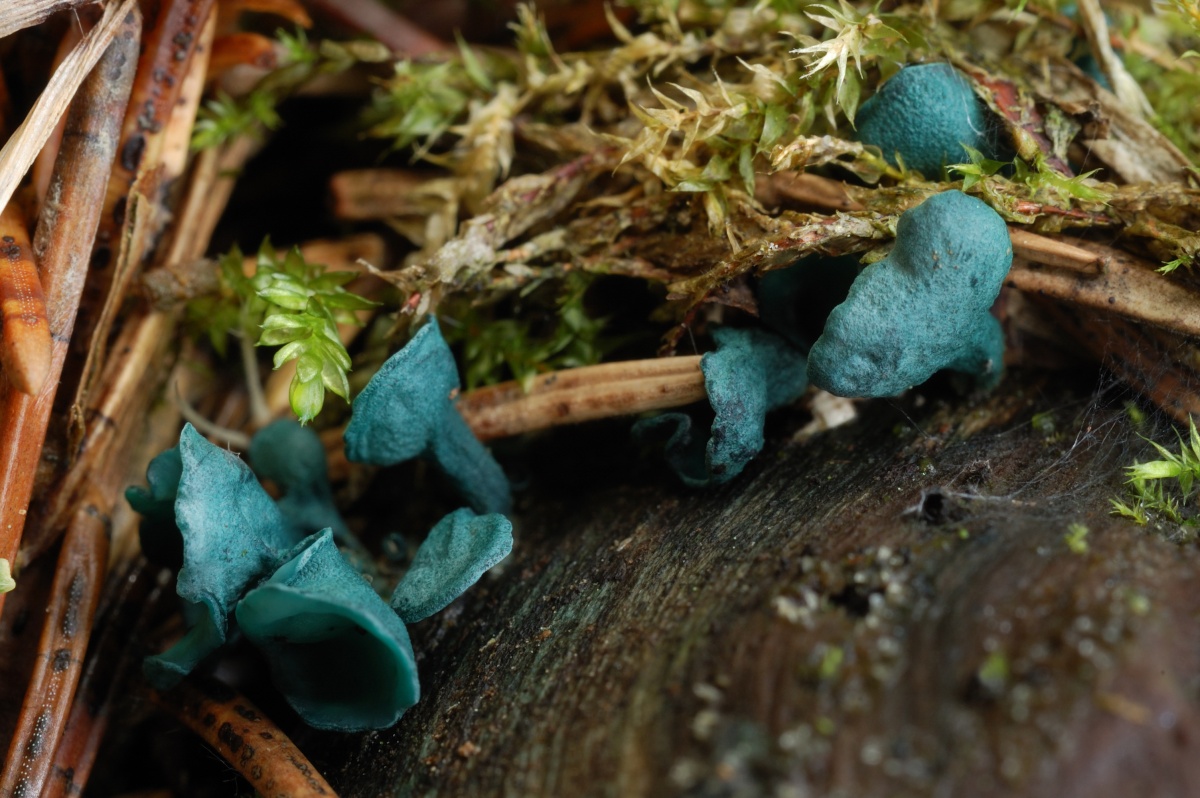Description
Blue-green painted wood
Typical discomycete. Fruit bodies (apothecia) are 3-8 mm in diameter, cupped, disc-shaped or spatulate, often asymmetrical. The inner spore-bearing surface (hymenophore) is blue-green, sometimes with a yellowish tinge, darkens with age, smooth. The outer sterile surface is also blue-green, darker, glabrous or velvety-hairy. The mycelium of the fungus stains the wood in a blue-green color, which makes the fungus noticeable even during the formation of apothecia. The false pedicle is usually eccentric, pronounced, up to 6 mm long and up to 1.5 mm thick, tapering downward.
The pulp is thin, blue-green, odorless.
Spores are whitish in mass, 5-8 (10) × 1-2 (2.5) µm, fusiform or elliptical, with two droplets-guttula at the ends, with smooth walls. Asci eight spore, 45-50 × 3-4 µm, clavate. Paraphysis about 1.5 µm thick, filamentous, with slightly thickened ends, often branched at the base, septate, exceeding the length of the asci. External excipule with spiral-like curved or straight thin-walled hyphae 1-1.5 (2) µm thick, raised above the surface (and making it velvety).
Similar views edit code
The characteristic whitish regular fruiting bodies of chlorocyboria are blue-green
Chlorociboria aeruginosa (Oeder) Seaver ex C.S. Ramamurthi, Korf & L.R. Batra, 1958 - Blue-green chlorocyboria is a rarer species in most regions. It is almost always distinguished by regular apothecia of smaller sizes on the central, often reduced stalk, despite the name, with a paler, at least with age, whitish spore-forming surface, and yellowish pulp. The spores are larger, 8–15 × 2–4 µm.
Description of chlorocyboria blue-greenish
The diameter of the fruiting body of blue-greenish chlorocyboria is tiny - 3-8 millimeters. The shape of the fruiting body can be discoid, cupped or spatulate. Fruit bodies are often asymmetrical. The outer sterile surface of the fruiting body is blue-green. She can be velvety or naked.
The inner surface of the fungus is spore-bearing, it is called a hymenophore. The color of the hymenophore is blue-green, lighter in comparison with the outside, sometimes with a yellow tint, over time it darkens. The hymenophore is smooth.
The mycelium of the fungus stains the tree green-blue, which makes the fungus visible. The pulp is odorless, thin, blue-green in color. Spores are elliptical or fusiform with a pair of guttula droplets at the ends. The walls of the spores are smooth. The color of the spore sinus is whitish.
The false pedicle is pronounced, most often eccentric. Its length reaches 6 millimeters, and its thickness is 1.5 millimeters. The leg narrows downwards.
Places of distribution of chlorocyboria blue-greenish
Chlorocyboria mushrooms are saprotrophs, that is, they settle on decaying bare wood. They choose hardwoods and are most often seen on oak trees.
Chlorocyboria blue-greenish is a widespread fungus. It grows in many regions of our country. In addition to Russia, this species is common in Europe: Denmark, Great Britain, Finland, Slovakia, the Netherlands, Czech Republic, Sweden, Bulgaria, Ukraine.
Also chlorocyborium blue-greenish grows in Asia: Georgia, Armenia, Japan, China, India, the Philippines. In addition, these mushrooms grow in South and North America: in Venezuela, Canada, Greenland, USA and Cuba.
Similarity of blue-greenish chlorocyboria with other species
Chlorocyborium blue-green in appearance is very similar to chlorocyborium blue-greenish, but it is a rarer species. The difference lies in the fact that on its reduced central pedicle the apothecia are smaller. In addition, the spore-forming surface, in spite of the name, is paler in blue-green chlorocyboria, especially with a return.Also, the flesh of this mushroom is yellowish, and the spores are larger.

